The Bennington Triangle: The Ghost Town of Glastenbury Vermont
Driving through the the tranquil hills of Bennington County, it is hard to imagine anything particularly nefarious lurking among the trees. However, as is all too common in small town America, the legacy of something much darker casts its shadow over the county. This little town in particular carries with it a tale of mystery ripe with ghost towns, disappearances, serial killers, and an Abenaki legend about people being swallowed up by the mountain, never to be heard from again. The term Bennington Triangle was first coined by New England paranormal author Joseph A. Citro during a radio interview in 1992, in reference to a non-specific area located between the towns of Bennington and Shaftsbury, and including Bald Mountain in Woodford. It was during this interview that he drew the parallels between the bizarre disappearances in these towns with the better known mystery of the Bermuda Triangle. The name stuck, and even those who were hesitant to buy into the supernatural hype were using it. Whether or not it is an appropriate way to explain the circumstances surrounding the five disappearances that occured in the so-called triangle between 1945 and 1950 has been in question since local guide Middie Rivers first went missing on November 12, 1945. However, most people agree that there is something a bit strange going on in these hills. According to local historians, there have been only three documented deaths on Glastenbury Mountain-John Crowley, John Harbour, and Frieda Langer- and only one unexplained disappearance- that of Middie Rivers. However, they are not the only people to have seemingly vanished, according to popular local legend.
It all began in 1872 with the formation of the logging community on Glastenbury and the construction of the railroad line which ran for nine miles, from the hamlet to downtown Bennington. With the use of three coal kilns, the workers on the mountain would spend the days clearcutting massive parcels of land to burn into coal, which would then be shipped back down the mountain. It was during this time that the first Glastenbury death occurred. It began as a dispute between John Crowley and a man who went by the alias of Henry McDowell, on April 4, 1892. First-hand accounts are not clear on what was said, but as the story goes, whatever words left John Crowley’s mouth were enough to encourage McDowell to pick up a rock and bludgeon him to death. McDowell fled, but was caught in Norwalk CT. Once convicted, he was sent to Waterbury State Hospital. After gaining the confidence of the staff and being allowed out into the yard however, he hid in a coal cart and escaped, never to be seen again.
The next death was on opening day of Vermont’s first statewide deer season, October 1, 1897. The victim was by all accounts an upstanding Woodford man with a wife and four children by the name of John Harbour. As the day started, Harbour succumbed to a single gunshot wound. The killer was never caught.
It was around this time that the town of Glastenbury had reached its breaking point; the problem with a town built on the business of cutting down trees is once the trees are gone, so is the business. In 1897, the town declared bankruptcy, and the lumber mill was closed down. The following year, in a last ditch effort to stay relevant, Glastenbury abandoned its image as a mill town and remarketed itself as a summer resort. The old workers quarters had been transformed into a hotel, while the mill offices became a casino. Whether or not this was enough to save the town is up for debate as the resort was only open for a single summer. In fall 1898, a flood hit the mountain, devastating the town. Experts have speculated that the severity of the flood would not have been nearly as bad if it were not for the clear cutting necessary to keep the lumber business afloat. In the end, despite the desperate efforts of the town, the loss of the trees truly were its undoing. By the year 1934, Glastenbury and Somerset, with only three residents, became the only towns in Vermont’s history to be disincorporated, cementing its fate as the state’s resident ghost town.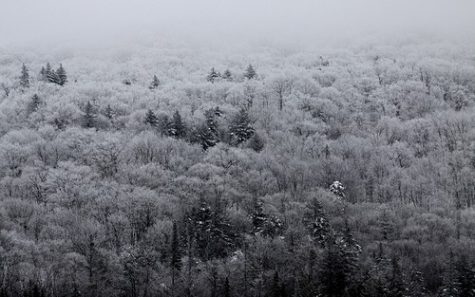
For any other town, this would have been the end. It would have remained among the trees, lost to over ambition and forgotten by all, save for state records. For Glastenbury, though, this was not the case. Just eleven years after it ceased to be a town, the little village of Glastenbury as well as the surrounding area would reach unprecedented fame; and it would all begin with a seventy-four year old local hunter and guide named Middie Rivers. The story goes that in November of 1945, Middie who was very familiar with the mountain, was leading a group around 4 o’clock, near the Hell Hollows area when he claimed he saw something, running ahead around the next bend. When his companions reached the corner only seconds later, the man was nowhere to be found. A mass search quickly followed yet the only trace of Middie Rivers were a few rifle shell casings lying in the mountain soil near Bickford Hollow. Since then, many witnesses have claimed to see large humanoid creatures lumbering through the trees near where Middie was last seen. For some this is clear indication of a Vermont Bigfoot, which begs the question: is that what Middie saw when he left his group that autumn day? Well, it would explain the shells. For other, more skeptical people, Middie serves as a cautionary tale of what happens when one goes off his own in an area known for its ditches, mines, and abandoned wells. It is here, they claim, Middie can be found; decades later merely bones lying at the bottom of a well, waiting to be discovered and laid to rest.
The next victim of Glastenbury is a young Bennington College student, 19-year-old Paula Weldon, who met her fate little more than a year after Middie. On December 1, 1946 Paula had just gotten off her shift in the Bennington College cafeteria when she told her friend “I’m going on [the] Long Trail.” According to reports, Paula had been somewhat out of it and was hoping to clear her head. These would be the last known words of Paula Weldon, as she soon after departed for Glastenbury mountain, with little more than a sweater to keep her warm in the bitter December evening. She would not return to the college. The last person to see her alive would be a driver who spotted her walking down the side of the road in Woodford, and like Middie, it would be 4 o’clock. The search for Paula Weldon would be the largest in Vermont history at the time and lead to the formation of the Vermont State Police. Rumors spread like fever across New England. Some claimed the mountain took her; others say that she was abducted before even reaching the area that would be known as the “Triangle”; while others feared a serial killer lurked among the trees, prowling the same hunting grounds where he had caught Middie Rivers a year before. Today, most have settled on a few different theories. The first involves her father, a wealthy socialite from Connecticut. Reportedly he and Paula had not been getting along, leaving some to assume she had run off with a boyfriend. As nice a thought as this may be, Paula never said anything about a boyfriend to her friends at Bennington College, and why would someone leaving for good leave everything she owned behind in her dorm room? The second was that the girl simply succumbed to the elements of the cold mountain. However, those who believe in more paranormal theories refuse this notion, pointing to the fact that the mountain was combed for clues and the body of the young woman certainly would have been found if that was the case. Whether she is the victim of a serial killer, the malevolent spirits of the mountain, or a bad familial relationship is unknown and to this day, Paula Weldon’s final resting place has yet to be found.
James Tetford, a resident of the Veterans Home in Bennington was the next to go missing in 1949. Unlike Middie and Paula, James’s tale is quite difficult to fill in. As the story goes, James simply disappeared off the bus that had taken him and other veterans north to St. Albans so that he could visit his wife. The other passengers reportedly claimed they had last seen him sitting in his seat around 4 o’clock in Woodford, near the last place Paula Weldon had been seen. When the bus arrived in Bennington, his luggage was still on his seat, but the old soldier was nowhere to be found. As much as this fits into the Bennington Triangle story, the facts are quite different. According to officials from the case, a week had actually gone by before anyone noticed that Tetford was missing, and another week passed before anyone started searching. Retracing his route brought them to an old friend of Tetford who claimed to have run into him at a reststop the day he went missing. According to him, Tetford seemed depressed and expressed no desire to return to the veterans home in Bennington. Tetford’s story is the most out of place among the victims of Glastenbury, but considering how he too has never been found, it does make one wonder which story is to be believed.
The fourth soul to lose its way in the Triangle was 8 year old Paul Jepson on October 8, 1950. 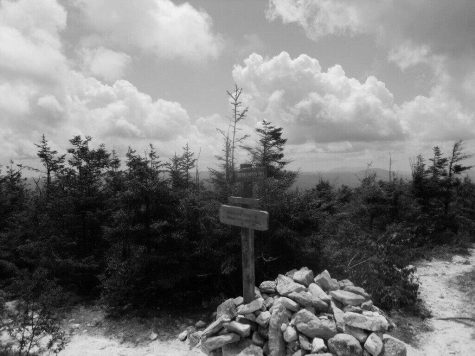 According to his parents, he was with his mother while she was feeding some pigs, when the boy decided to go off on his own. His father claimed that he had been talking for weeks about making the trek up Glastenbury, so when he disappeared that is where they assumed he had gone. A tracking dog was brought in all the way from Keene, NH in hopes of finding the boy. The dog tracked him to Woodford, almost exactly to where Paula Weldon was last seen. From there, the scent was lost. As alluring as this coincidence may be, there was reportedly a great deal of rainfall the night he went missing, which would have made his scent very difficult to detect. The other explanation for his disappearance is, in this writer’s opinion, much more sinister than anything Glastenbury has to offer. The rumor of the day was that it was his parents who, tired of their child who many said had a bit of a behavior problem, were the ones to kill him. The reason why his body has never been found is because it was Paul that his mother was feeding to the pigs. Such tales could have prevented him from being found, as within two weeks of hearing of this rumor, his parents shut down and refused to speak further to both media and police, ensuring that the child’s location would never be known.
According to his parents, he was with his mother while she was feeding some pigs, when the boy decided to go off on his own. His father claimed that he had been talking for weeks about making the trek up Glastenbury, so when he disappeared that is where they assumed he had gone. A tracking dog was brought in all the way from Keene, NH in hopes of finding the boy. The dog tracked him to Woodford, almost exactly to where Paula Weldon was last seen. From there, the scent was lost. As alluring as this coincidence may be, there was reportedly a great deal of rainfall the night he went missing, which would have made his scent very difficult to detect. The other explanation for his disappearance is, in this writer’s opinion, much more sinister than anything Glastenbury has to offer. The rumor of the day was that it was his parents who, tired of their child who many said had a bit of a behavior problem, were the ones to kill him. The reason why his body has never been found is because it was Paul that his mother was feeding to the pigs. Such tales could have prevented him from being found, as within two weeks of hearing of this rumor, his parents shut down and refused to speak further to both media and police, ensuring that the child’s location would never be known.
Frieda Langer, who went missing exactly 20 days after Paul on October 28, 1950, is the only of Glastenbury’s victims to be found. The 53-year-old woman was hiking Glastenbury with her cousin and her husband, when she fell into a stream. Wet, she told her cousin that she was going back to camp in order to change, a straight 100-yard shot from where they were. Thinking she would be fine as they were so close, her cousin sent her off, only to discover later that she never made it back to camp. A polygraph test given to both her husband and cousin eliminated foul play. As with the previous four cases, the mountain was searched, but nothing was found until the following May, when two hunters stumbled across her badly decomposed body up in the woods near Somerset. How she died and how she wound up so far from camp is a mystery, but to this day she remains the only Glastenbury victim to be laid to rest.
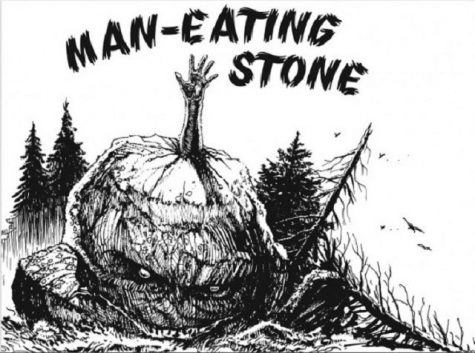 This five year period is the most concentrated in the Glastenbury phenomenon, although one Brattleboro teen is believed to have disappeared there in 2008; but it is not the end of the story. It’s not the beginning either: reports of odd occurrences date all the way back to 1761, when New Hampshire governor Benning Wentworth claimed sightings of odd flashing lights, shrieking among the trees, and shadowy figures. These same sightings are still reported to this day, with many claiming it as a UFO hotspot and Bigfoot haven. For me, I look to the Abenaki of Vermont for answers to the Mountain. Though Citro likes to point to their legend of the man eating stone to explain the disappearances, I find more meaning in how they describe it as “The place where the four winds meet.” Even today, people who dare to spend the night atop the mountain claim to wake up disoriented, often miles away from where their GPS indicates. It is the belief of the Abenaki that the mountain is unsafe. The winds are too strong; the noises among the trees too unsettling; and the possibility of getting lost too great, as can be seen in one recent camper’s account, who believed himself to be ¼ mile from his car, only to discover he was over 8 miles away on the mountain encompassing 26,000 acres. Tales of disappearing on mountains even half the size of Glastenbury are common, and when you factor in the mines and erosion leftover from its time as a bustling lumber mill, these tales do not seem so odd. Perhaps the first people of Glastenbury should have taken a cue from the Native Americans before them, and just stayed away.
This five year period is the most concentrated in the Glastenbury phenomenon, although one Brattleboro teen is believed to have disappeared there in 2008; but it is not the end of the story. It’s not the beginning either: reports of odd occurrences date all the way back to 1761, when New Hampshire governor Benning Wentworth claimed sightings of odd flashing lights, shrieking among the trees, and shadowy figures. These same sightings are still reported to this day, with many claiming it as a UFO hotspot and Bigfoot haven. For me, I look to the Abenaki of Vermont for answers to the Mountain. Though Citro likes to point to their legend of the man eating stone to explain the disappearances, I find more meaning in how they describe it as “The place where the four winds meet.” Even today, people who dare to spend the night atop the mountain claim to wake up disoriented, often miles away from where their GPS indicates. It is the belief of the Abenaki that the mountain is unsafe. The winds are too strong; the noises among the trees too unsettling; and the possibility of getting lost too great, as can be seen in one recent camper’s account, who believed himself to be ¼ mile from his car, only to discover he was over 8 miles away on the mountain encompassing 26,000 acres. Tales of disappearing on mountains even half the size of Glastenbury are common, and when you factor in the mines and erosion leftover from its time as a bustling lumber mill, these tales do not seem so odd. Perhaps the first people of Glastenbury should have taken a cue from the Native Americans before them, and just stayed away.
Whether it’s the natural or supernatural that haunts the hills of Glastenbury Mountain is a question for the ages, but its reputation has not only helped to influence horror author H.P. Lovecraft, it has also made the mountain one of the most mysterious places in the Northeast.
For those who hope to hike the trail (20 mile round trip):
https://www.fs.usda.gov/Internet/FSE_DOCUMENTS/stelprdb5313356.pdf
For those with 4WD, this trail will cuts 20 miles to 5 miles:
https://www.summitpost.org/fayville-route/625181 (4WD route)
Harbour Road, where Paula Welden was last seen.
Hell´s Hollow- the last known location of Middie Rivers
Bickford Hollow- where Middie’s rifle shells were found
A farm on Chapel Road where Paul Jepson supposedly wandered off to never be seen again
Stone foundations are all that’s left of the once bustling community on Glastenbury Mountain


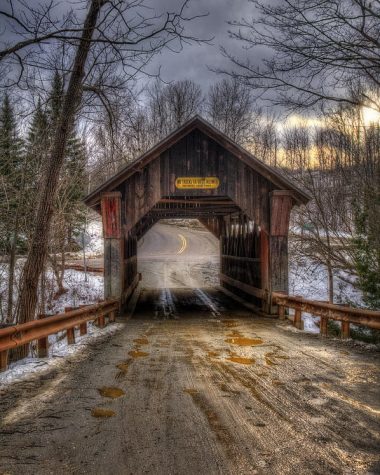


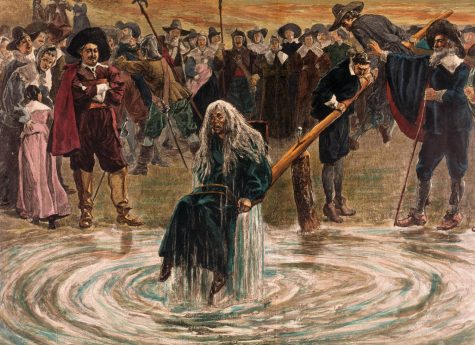





Tim Gasper • Oct 30, 2018 at 3:34 pm
Great article and photos, thank you! In his book “Weird New England” Citro also tells of an early nineteenth century stagecoach trip along the ridge of Glastenbury Mountain when a heavy thunderstorm and rain cause the coach to get stuck. As the driver was investigating, “something gigantic” spooked the horses and slammed against the stagecoach. Whatever it was, it was huge with glowing eyes and it roared as it disappeared into the woods.